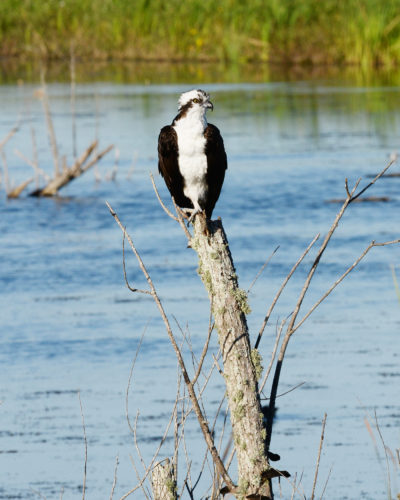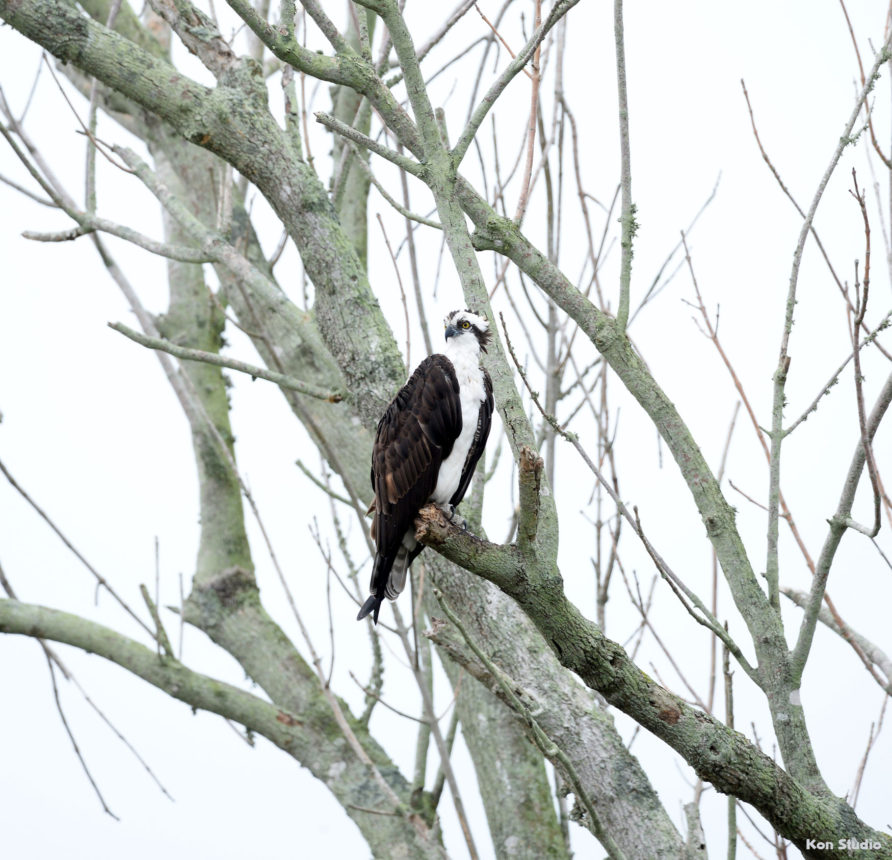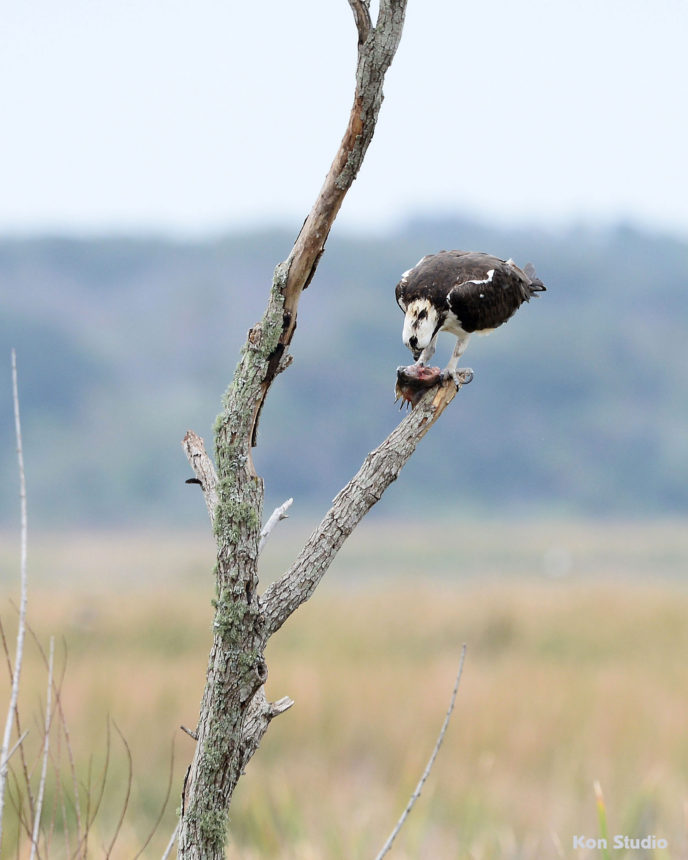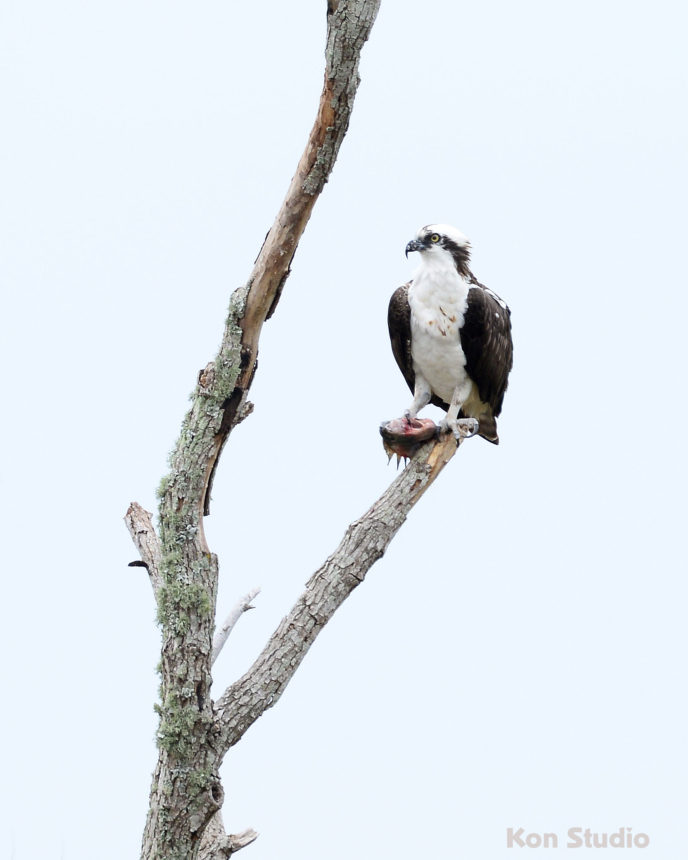The Osprey (Pandion haliaetus) is a medium-sized bird of prey that is commonly seen along with coastal habitats within Florida. These birds, also called the Fish Hawks, have a brown upper body, white underside, and a black line across their eyes. They can reach 2 feet in length and have a 6-foot wingspan. These raptors hunt for food by using their keen senses, especially their vision, and kill prey with their talons. This is the only raptor with a reversible toe that can grasp prey with two toes in front and two toes in the back. They will soar high above their prey and dive feet first often submerging themselves to catch their prey. Their feet are barbed to be able to hold on to slippery fish. Osprey nests are large platforms built mainly of large sticks, sod, and grasses high above the ground although they will use any high man-made structure. A female Osprey will be attracted to the male that can provide the best nest. Osprey mate for life and will have between 2 to 4, creamy white blotched brown eggs a year. The eggs do not hatch all at once but will hatch 3 to 5 days apart. They fledge at 8 weeks and reach sexual maturity at 3 years of age. Because of its highly visible nest, the Osprey is a prime indicator species that can be used to monitor habitat conditions, fish populations, and overall environmental health.
Fun Fact: An extinct species of osprey, the Pandion lovensis, was discovered through fossils here in Florida. The fossils dated back to the Tortonian stage of the late Miocene sub-Epoch of the Clarendonian age. That’s about 9 million years ago. At that time Florida was an island that spanned from the eastern Panhandle and curved down a narrow stretch of the gulf coast to central Florida. During this time temperatures were dropping and the Earth was entering the ice age known as the Quaternary glaciation. This process took approximately 3 million years in which average global temperatures dropped to between 4-7 degrees Celsius. Not all areas had ice. Florida was much cooler but was not part of the freeze. Despite the lack of a freeze, colder conditions may have prevented the ability of Pandion lovensis to survive.





